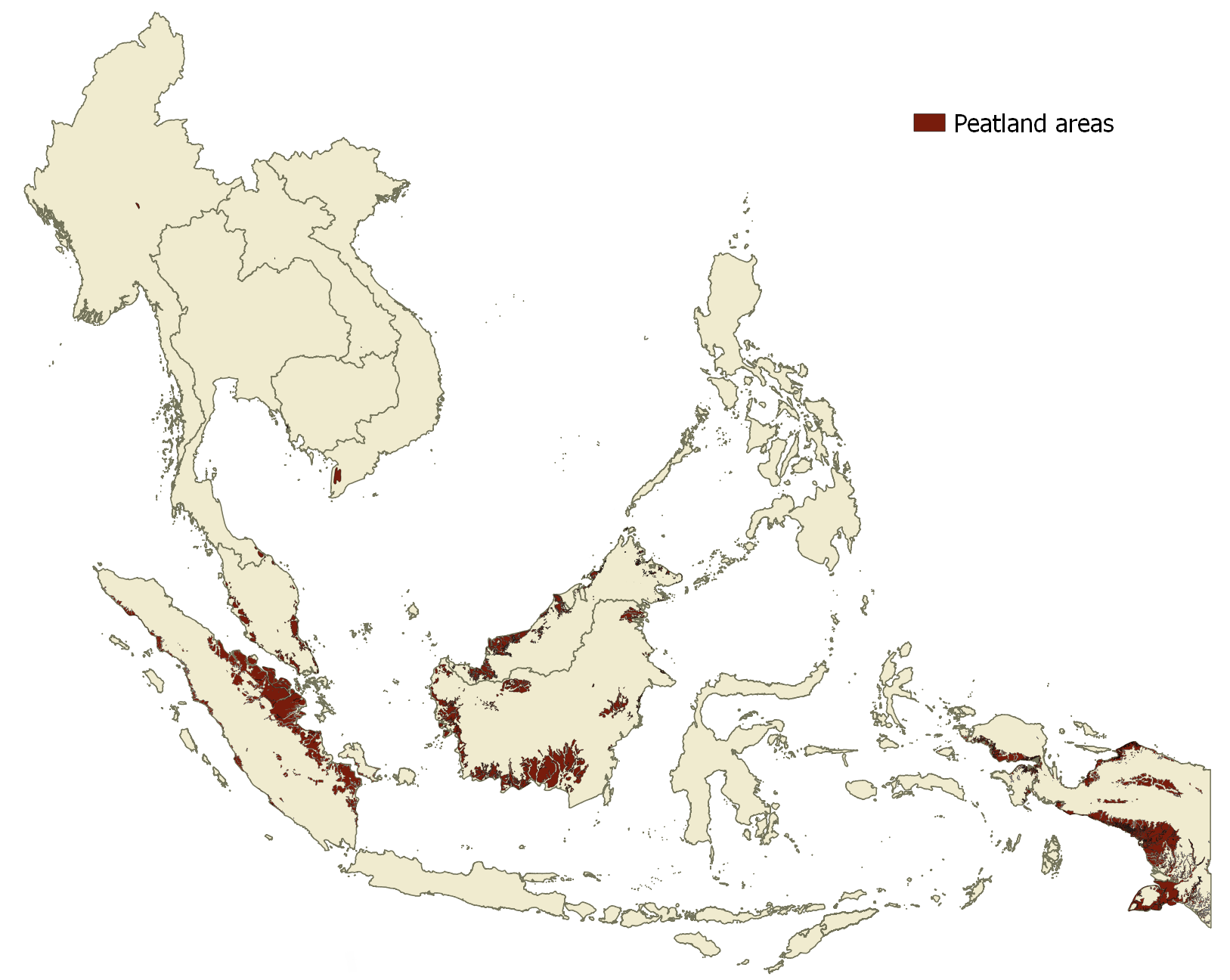Peatlands in Southeast Asia
Introduction
Peatlands in Southeast Asia cover about 23 million hectares, or 60% or the world’s tropical peatlands and 6% of the global peatlands. In the region, the majority (70%) of peatlands is in Indonesia, but peatlands can also be found in other Southeast Asian countries. With depths of peat between 0.5 and 10 m, peatlands are usually located in low elevation, sub-coastal areas. Peatlands only cover 2 to 3% of the Earth’s land surface, but store around 25% of its terrestrial carbon. This makes peatland management, and prevention of peat fires, a critical part of carbon sequestration and storage.

Image credit: Global Environment Centre
Peatland fires
Fires burning in peat and other organic terrain are predominantly characterized by smoldering combustion. Such fires are spreading slowly, flameless and burn at low temperatures. Smoldering is dominated by pyrolysis and heterogeneous oxidation while flaming requires gas-phase oxidation. In their natural state, peatlands are too humid to burn. In Southeast Asia peat fires are commonly the result of human intervention.
Key characteristics:
Peat is particularly sensitive to drought conditions: the severity of peatland fires is foremost related to soil moisture, second to the mineral content of the peat. This means peat drainage makes the soil more flammable; not only does it reduce the moisture available, it also creates channels whereby atmospheric oxygen can follow, thus encouraging smoldering at depth. Because smoldering fires transfer heat at depth, the fuel consumption of peat fires can be two orders of magnitude larger than flaming fires.
Smoldering fires are hard to suppress, requiring large amounts of water. Moreover, the nature of smoldering (as opposed to flaming fires), means lower oxygen concentrations are needed (about 10% rather than 16% for flaming fires) and oxygen removal is inefficient until the fuel bed is cooled enough to prevent re-ignition. Finally, because lower temperatures are involved (450 to 700°C rather than 1500°C), dry peat is much more susceptible to smoldering fires and ignition is easier; dry peat is also at risk of self-ignition. The main issue when combating smoldering fires is that standard firefighting techniques which work for flaming fires (e.g. fire-breaks) cannot be relied upon to extinguish peat fires: prevention is much more efficient.
Flaming and smoldering interact, such that smoldering fires typically succeed flaming fires, and under the right conditions, smoldering fires can also provide an ignition source for flaming fires to emerge. This means an integrated fire management approach is required for locations at risks of smoldering fires such as dry peatlands.
The chemical composition of emissions from peat fires significantly differs from that of typical flaming fires. Incomplete combustion is prevalent, with more reduced compounds emitted. For instance, the CO/CO2 ratio in smoldering fires is about 0.4 (about 0.1 for flaming combustion).
Because little heat is generated, pollutants are emitted and accumulated close to the surface, which encourages their transport to population centers where they seriously threaten health.


